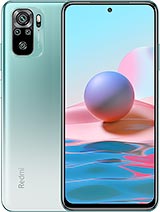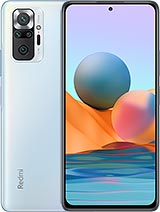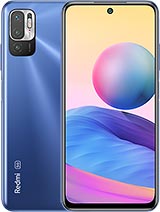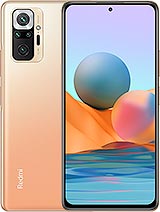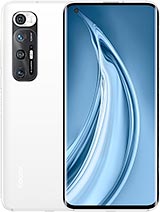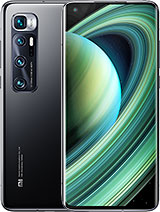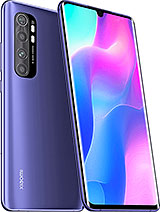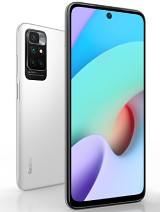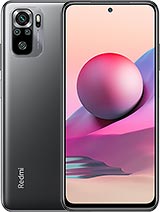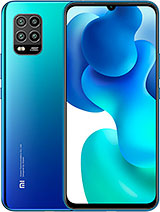The 108-Megapixel Smartphone Camera?! By Marques Brownlee
It, what's up guys MHD here, and this is the Xiaomi me note, 10- that I've been using for about a week for exactly one reason: it has a one hundred and eight megapixel camera on the back, so that is a wild number, a hundred and eight megapixels, but I should mention we have seen this megapixel push in smartphone cameras before I remember there's a little streak back when I was in college, like we had a bunch of four and eight megapixel cameras than a bunch of twelves and then a bunch of 20-somethings, and then we got that 41 megapixel Nokia, Lucia 1020, which for a while was basically the king of smartphones, and it was pretty good, but it seemed like every time we got a new higher megapixel number. Then that became the smartphone camera king, even though megapixels didn't mean everything like just because something has a 16. Megapixel camera doesn't mean it's necessarily better than the 12 megapixel camera. In fact, a lot of times it's the other way around so anyway, now I'm sure you've noticed that we've sort of settled around pretty much everyone has 12 megapixel cameras, but a hundred and eight megapixels, like that's gotta, mean something it's gotta, be something there right. Well, let's start with what that actually means. The resolution of one photo from a typical 12 megapixel camera, like the iPhone, is around 4000 by 3000, so that totals around 12 million pixels 12 megapixels, so the same scene from this new Xiaomi camera comes in at twelve thousand by nine thousand, which is multiplied to get you a hundred and eight million pixels, or a hundred and eight megapixels, so you're getting about three times the vertical and horizontal resolution to make these numbers and the file size for me has ranged from about 20 to 30 megabytes per photo.
So it's pretty big, and you've, probably really noticed. There are actually five total cameras on the back of this phone: the 100, an eight megapixel main camera, then there's a 12 megapixel 2x telephoto, a 20 megapixel ultra-wide, a 5 megapixel super telephoto at 5x and a 2 megapixel macro camera and there's also 2 flashes. Two pairs of flash like it is a lot of hardware, clearly so much in fact that it sticks out from back of the phone, and you end up like with it rocking on a table and everything. But that's the sacrifice you make if you want all these pixels and all this camera quality. So the question is: how good do the photos actually look, and the answer is perfect.
Sometimes so I said before there are a lot of things that contribute to the quality of a smartphone photo color accuracy, exposure, dynamic range, contrast, etc. , but the main thing you're gonna notice, of course, with such a high resolution here- is sharpness and detail. The photos in the 108 megapixel mode are significantly sharper more detailed than any other smartphone I've ever used, especially you give it a lot of light so in the daytime, under bright lights. Basically, but I will modify it to say this. It's mostly Center sharpness, see.
The center of these frames are super crisp and sharp, but when you move out to near the outer edges and corners of the frame, it's rarely anywhere near as sharp. This is a perfect example in the center. Here you can see the details in this Much, the fibers in the cotton. You can practically feel the softness I mean you can feel the softness in person for yourself everything's back on sale at shop, MHD, calm, but yeah. You get the idea super high detail here, but the edges of the frame, especially the corners, get very quickly distorted and fall out of focus even on flat landscape shots like this, which is crazy.
Furthermore, you still have that lack of center sharpness. Normally, if you have a subject in the middle of a frame- and you want that tack, sharp focus and don't really care about the edges, then that's fine, but in a landscape or something wider, you really notice the edge distortion. I think a great way to show this is to give context so iPhone 11 Pro, we all know great set of cameras. I could use any other pixel for or a high-end smartphone system, but I took the same photo on iPhone, 11 Pro and me note: 10, back-to-back 12, megapixels, 108 megapixels, so here's an alleyway very similar, of course, with each photo different color temperatures slightly different exposures, a little but again pretty similar, but the advantage of so many pixels is you can zoom in and keep clarity and there's your actually kind of able to read this tiny security sign over here on the chamois, where it's literally just blurred lines on the iPhone here. This shot of the river is pretty similar, where your zoom doubt you'll notice.
The Xiaomi is a little more contrast II, while the iPhone is a bit more flat. That's typical keeps more shadow exposure. Detail, but as soon as you zoom in again, you start to see the difference in levels of detail, especially in the trees and really anything. That's near the middle of the frame like the links in the chain link fence with a hundred and eight megapixels versus twelve is super obvious and the theme keeps going kind of no matter what your subject is as long as it's in the middle of the frame when you're zoomed all the way out, they're pretty similar with their images, just the iPhone usually being a bit flatter and then zooming in gets you this immense amount of detail and sharpness, and this stayed true in well-lit shots. It definitely falls apart, pretty dramatically, though, in low-light, the iPhone has significantly less noise, so it does way less noise reduction in low-light and has not so much smoothing to do because of it.
While the Xiaomi software is struggling and smoothing over everything to the point where 108 megapixels with all this noise reduction is less detailed than 12 megapixels with excellent image processing. So we've sort of known it already, but software is clearly a big part of a camera's experience and I can't talk about this camera without actually talking about the photo taking experience, not just the image quality but using it. For starters, there's a separate mode for taking 108 megapixel photos. Typically, when you just open the camera in photo mode, you're going to take scaled roughly 27 megapixel photos still high-end, that's still a lot of pixels, but that's where it performs. Well, you can zoom in and out and with the extra lenses you can get to 2 X, ?, 5, X and then even further with hybrid zoom macro shots are cool.
There's the ultra-wide, if it feels fairly solid. But then you switch over to the 108 megapixel mode and things slow down quite a bit. Now, there's a noticeable shutter lag of over a second, as it captures the entire 12,000 lines of resolution and processes. The whole frame writes them to the not so fast storage, and then you can't view the photo you've taken until after another few seconds of that processing and writing the photo. And then you can see it sort of spinning for a bit and once it's done, you can view it and once you view the huge photo, it doesn't actually load the whole image right away.
It loads, a smaller proxy until you actually zoom in, in which case it decides out. Okay, you're looking for that extra resolution, and then it loads up the full size preview, and you can see it's sharpen up, and so it's doing all this mainly to avoid having you deal with that. Not so great experience all the time. It's smart, but this is not the highest end phone in the world, I'd call it upper mid-range specs. Are you know a Snapdragon 730, G chip, and you're, looking at six SIG's of RAM and 128 gigs of storage as the only spec, and so in general, it's not gonna, be the best equipped for spitting out 20, megabyte image files and manipulating them in real time? The rest of the phone I'd say is actually pretty well considered.
If you ask me, it's really solidly built. You've got a five thousand two hundred sixty William hour battery and there's a 30 watt fast charger in the box and around the front. I, don't like the curved screen, and I've talked about that before, but generally the display itself is nice. It's a 1080p AMOLED with just that small notch. At the top there's an in display fingerprint reader.
There is even a headphone jack and an IR blaster, and you can see its running shimmies UI new UI 11 on top of android, which has plenty of its own quirks and features. Definitely an improvement over the previous version, from what I've used, but clearly still skinned. So overall, my take is its pretty sweet that we have a legitimate like an actual hundred and eight megapixel sensor that can fit in a smartphone today, like just for the number on paper. That's really cool. It's not some faked composition, adding up detail from three different cameras.
It's real! Is it good? Yes, sometimes it's legitimately really useful to take like landscapes and be able to use that center of frame, which is super, detailed and crop it and do whatever you want with that. But the sensor is so new and so big that the image processing pipeline makes not so great photos of close-up subjects and low-light scenes. So it's clearly not flawless. I really became most interested in the camera in this phone because of the rumor that some camera phones next year, specifically galaxy s.11 we'll have a hundred-plus megapixel sensor. That is exciting because that's going to be on a higher-end phone that can put the resources towards making that a reasonable experience, faster storage, higher-end, CPU, more RAM, just more processing power, and then you've course get a more tried-and-true Samsung image processing pipeline.
So all these things can maybe make a hundred megapixel smartphone photo normalized and normal feeling, instead of sort of like an add-on or an extra mode, which is the way it is on this camera. So I'm excited about that potential future, not just for the number on paper, but because of the actual improvement we've seen in smartphone camera tech and just camera tech in general. Since those uh Nokia Lucia 1020 days, fingers crossed don't lose sight of that either way. Thanks for watching catch you guys in the next one peace, this portion of the video is sponsored by Nova p. m.
so a Virtual Private Network secures your Internet traffic encrypts it and routes it through a remote server, so it essentially protects it through anyone locally trying to snoop on it's one of the most popular and secure tools. They've seen people using to protect their data, including myself, so noir VPN, is offering 70% off the three-year plan which comes to 349 per month, plus four additional months free. So you can find out about all of this at Nor view, PN comm, /, MK VPN we're going to check out the link below so that that's pretty wild number we've seen a hundred and eight megapixels. No, we haven't.
Source : Marques Brownlee

